A very unique and somewhat unmistakable bird with an incandescent head described as looking like a cross between a small crow and a brightly colored tube sock!
Meet the Bornean bristlehead
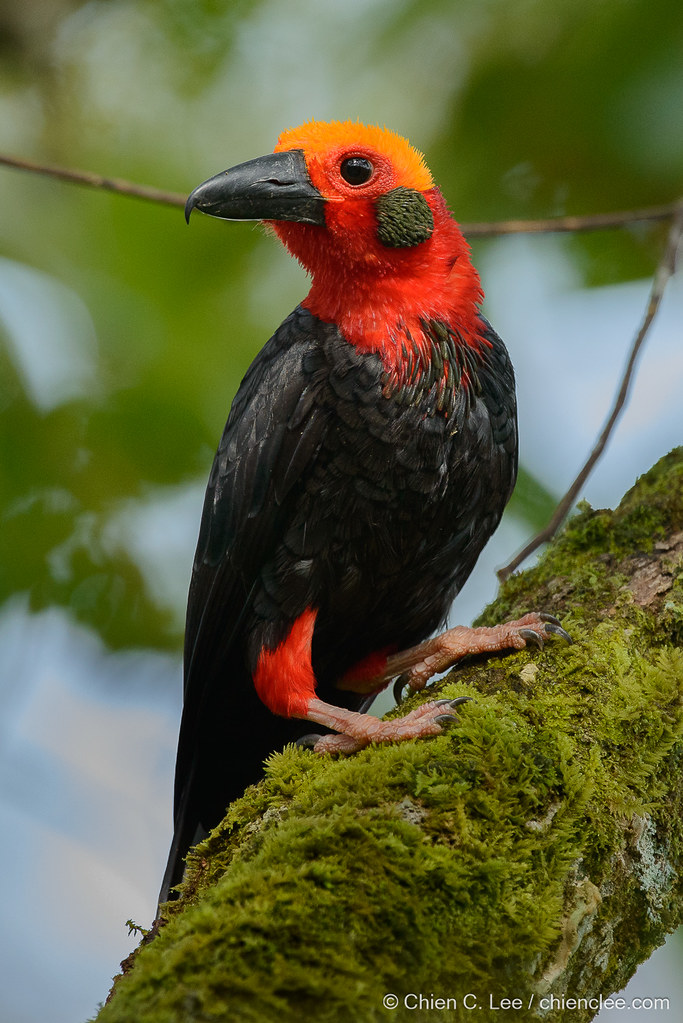
The Bornean bristlehead (Pityriasis gymnocephala) is also variously known as the bristled shrike, bald-headed crow, or the bald-headed wood-shrike. It is the only member of the passerine Pityriasidae family and genus Pityriasis. This bird is medium-sized (25 centimeters (9.8 in) in length), black or dark grey bird, with red thighs and a redhead, throat, and neck, with grey ear-coverts and a featherless yellow crown. There is a white wing patch, usually only visible in flight. It has a massive heavy black hooked bill and a short tail, giving it a chunky appearance. The crown is covered by short (3–4 mm) yellow or straw-colored skin projections like bare feather shafts, hence the name ‘bristlehead’.
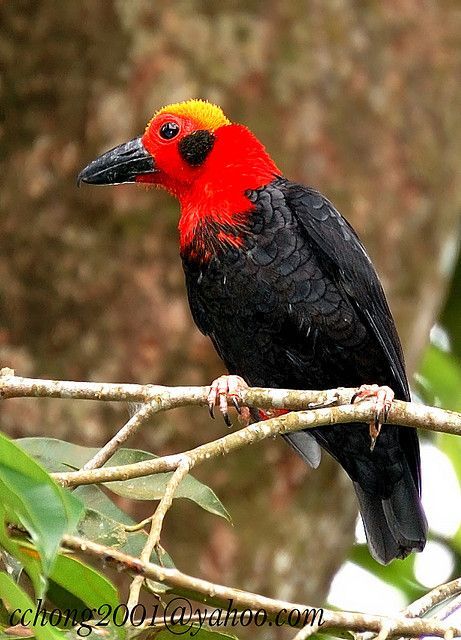
Females look similar to males, though they also have red spots on the flanks.
Juveniles have black thighs, red ear-coverts, a red eye-ring, just a few red feathers on the head, and undeveloped ‘bristles’.

Photo Courtesy of Mike Prince / CC BY 2.0
The Bornean bristlehead is endemic to the island of Borneo, where it is patchily distributed in eastern Malaysia, Brunei, and Kalimantan, Indonesia.
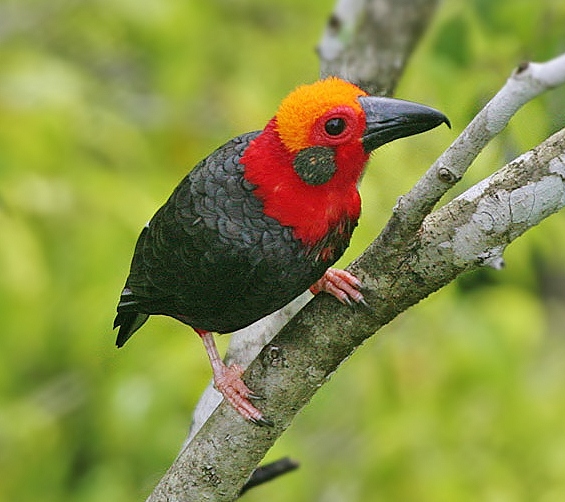
These birds prefer moist primary and secondary forests, in peat swamp forests, and in mangroves. They occur from sea level up to an altitude of 1.200 m.

They like to eat insects, namely Orthoptera, Phasmida, Coleoptera, Lepidoptera, Hemiptera, and Blattodea. However, they will also eat spiders, small reptiles, amphibians, and sometimes fruits.
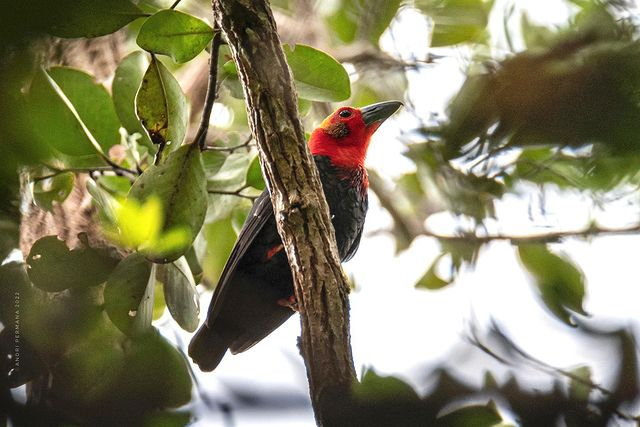
There is little information regarding the breeding biology of the Bornean bristlehead. They possibly breed in May-October. They are believed to make a cup-shaped nest with sticks and grasses. The eggs laid within are white with grey and brown spots. They may nest communally as two females were once observed feeding the same fledgling.

This species has a relatively large, even if patchy, breeding range. The population is believed to be declining as a result of widespread and rapid forest destruction within its range.
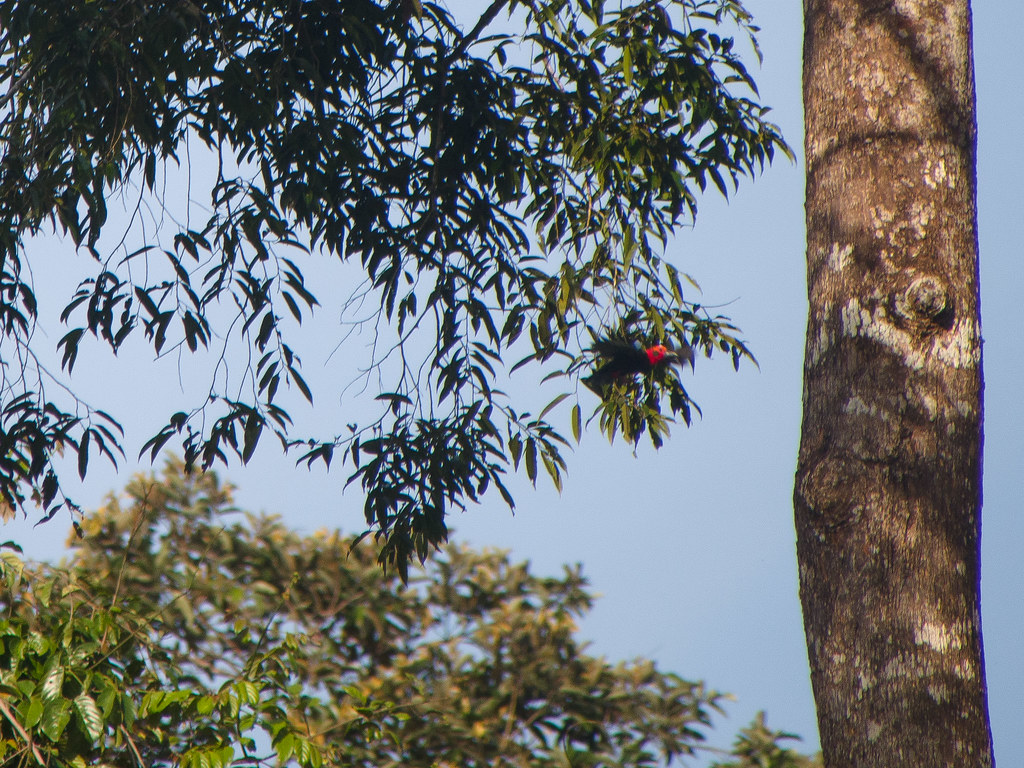 Photo Courtesy of Mike Prince / CC BY 2.0
Photo Courtesy of Mike Prince / CC BY 2.0
Watch these birds right here in the video below:




